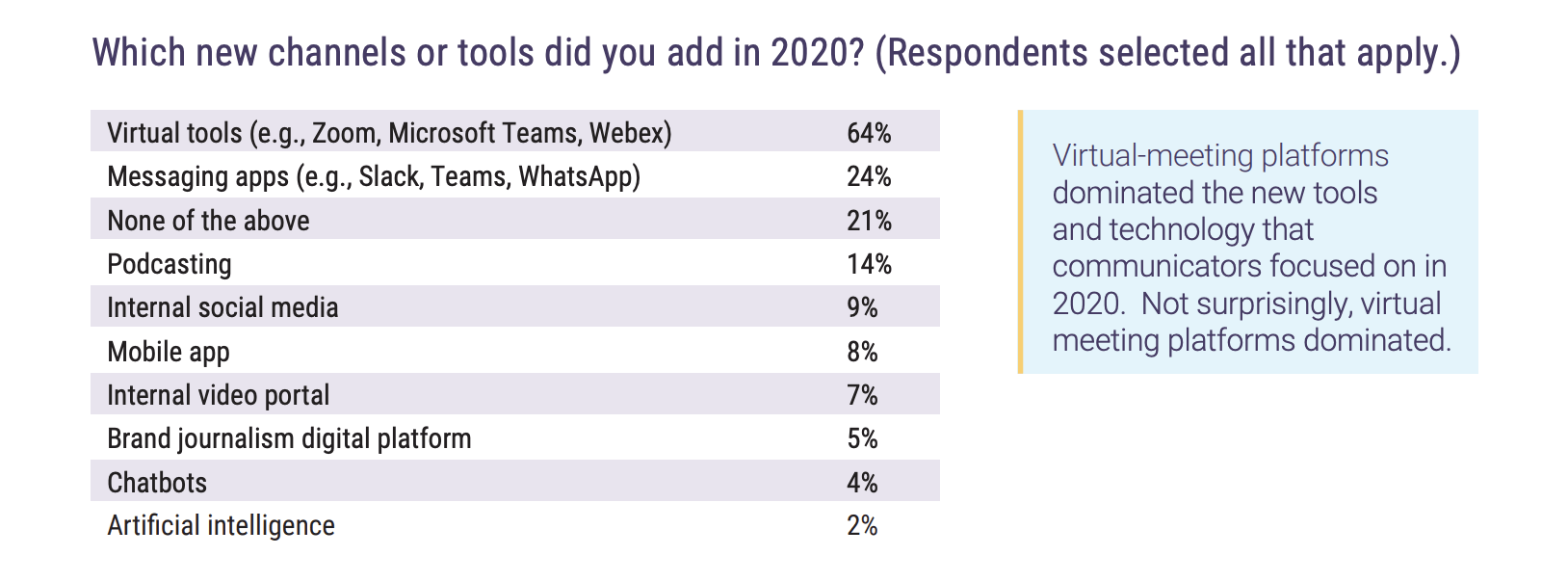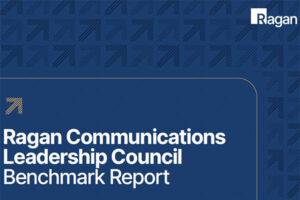Collaboration technologies are changing the nature of internal communications
At companies where messaging platforms have taken hold, employees (and communicators) rely on them more often than on traditional methods, according to Ragan’s 2021 Communications Benchmark Report.

One defining characteristic of the COVID-19 pandemic has been the challenges it poses for a distributed workforce, especially those with a global footprint.
Teams have been disrupted and meetings that would have happened in person moved to virtual platforms. Social cues that might have helped bridge cultural divides are more tenuous than ever. Whether it’s language, communication styles or meeting management, the challenges for communicators of a dispersed, global workforce were amplified in the 15 months.
[EXECUTIVE SUMMARY: Communications Benchmark Report 2021]
What’s fascinating though, and critical for communications success going forward, is how social technologies are beginning to transform the way people communicate and work with each other. These tools are more integrated into their organizations’ work than ever before, and the most sophisticated of them, message-based platforms, are gaining traction. At the companies where messaging platforms have taken hold, per McKinsey, employees rely more often on these social methods of communication than on traditional methods.
This has implications for broader process-level and organizational changes, too. Where message-based platforms are in use, respondents are likelier than others to say their use of social tools has enabled employees to communicate more often and to self-organize. They even say these technologies have changed the very nature of their work to become more project based, rather than team or function based. This workplace technology evolution provides enormous opportunities to communicators, giving them more channels than ever through which to deliver their messages, and do it in a way that emphasizes the collective workforce, not, for example, the overused channel of email.
It’s both noteworthy and not surprising given the pandemic that messaging and virtual communications tools dominated the channels that communicators relied on last year.
These findings are just a small fraction of the key findings from the third annual Communications Benchmark Report, an exclusive study from Ragan’s Communications Leadership Council, that reveals a range of sentiments and best-laid plans during a very dynamic time.
Download a copy of Ragan’s third annual Communications Benchmark Report executive summary here. To obtain a full copy of Ragan’s 2021 Communications Benchmark Report become a member of the Communications Leadership Council. Click here for more details.







